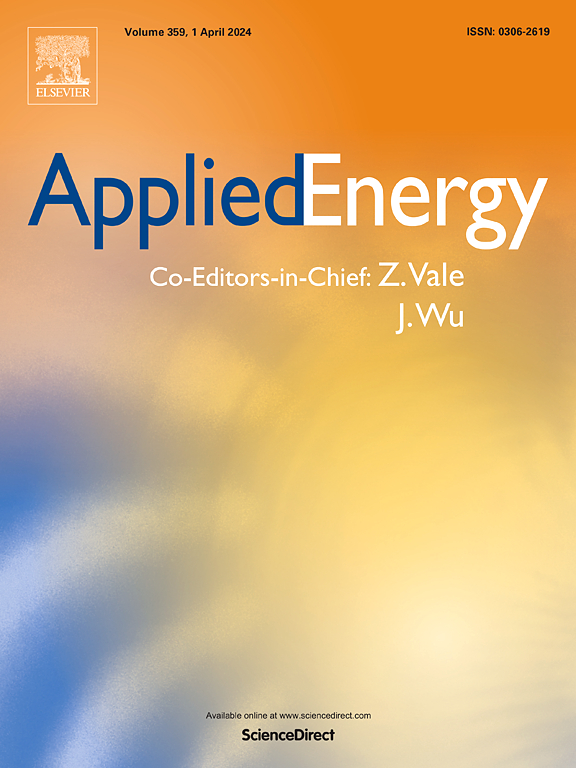Impact of direct air capture process flexibility and response to ambient conditions in net-zero transition of the power grid
IF 10.1
1区 工程技术
Q1 ENERGY & FUELS
引用次数: 0
Abstract
Recent studies show that the cost of transitioning the power grid to a net-zero system could be reduced with the integration of direct air capture (DAC) of carbon dioxide as part of the portfolio of technologies. However, existing capacity expansion studies that model DAC assume that it has a constant capture rate, ignoring the ambient environmental conditions that are known to affect the DAC capture rate as well as geographical location. Furthermore, there are currently no studies that endogenously model DAC flexibility, especially the value of load-shifting in such a large-scale industrial process in capacity expansion optimization. This study develops a capacity expansion optimization model that integrates more realistic data on DAC’s response to ambient environmental conditions as well as DAC process flexibility. Results show that ignoring the impact of ambient environmental conditions leads to underestimation of the required cost, DAC capacity and renewable energy capacity to meet the net-zero goal. It is shown that when DAC capture rate data that has been computed as a function of ambient conditions is used, about 22.2%, 2.5% and 1.9% more DAC, wind and solar capacity, respectively, is required to meet net-zero requirements, relative to the often assumed 90% capture rate. Moreover, increasing the operational flexibility of DAC using material storage in silos was found to lower the cost of generation capacity expansion by lowering the DAC and renewable energy capacity needed to meet the net-zero target. These findings will be useful in improving the accuracy of net-zero transition plans that are focused on climate change mitigation.
求助全文
约1分钟内获得全文
求助全文
来源期刊

Applied Energy
工程技术-工程:化工
CiteScore
21.20
自引率
10.70%
发文量
1830
审稿时长
41 days
期刊介绍:
Applied Energy serves as a platform for sharing innovations, research, development, and demonstrations in energy conversion, conservation, and sustainable energy systems. The journal covers topics such as optimal energy resource use, environmental pollutant mitigation, and energy process analysis. It welcomes original papers, review articles, technical notes, and letters to the editor. Authors are encouraged to submit manuscripts that bridge the gap between research, development, and implementation. The journal addresses a wide spectrum of topics, including fossil and renewable energy technologies, energy economics, and environmental impacts. Applied Energy also explores modeling and forecasting, conservation strategies, and the social and economic implications of energy policies, including climate change mitigation. It is complemented by the open-access journal Advances in Applied Energy.
 求助内容:
求助内容: 应助结果提醒方式:
应助结果提醒方式:


